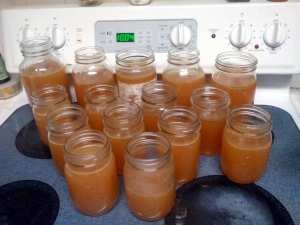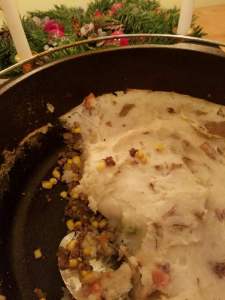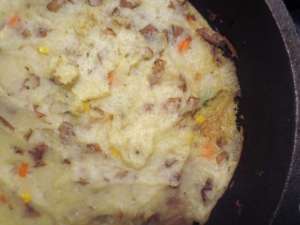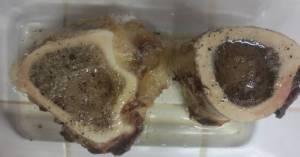Bone broth is a nourishing and cost-effective way to add nutrients to your soups and other recipes that call for broth. But what about the summer? Soup isn’t exactly a good summer meal, especially if you live somewhere that gets above 85°F, so how do you incorporate bone broth into your diet when soup sounds like the most terrible thing you could eat?
Grains. There is some research indicating that the nutrients in grains that have been properly prepared are even better absorbed when eaten with organ meats, bone broths, or animal fats. In the summer time I cook all of my grains in broth instead of water. It adds a nice rich flavor and it’s a good way to consume bone broth if you don’t like the broth itself. Not only that, but it makes your meal more filling for longer.
Potatoes. Use broth instead of milk in mashed potatoes. This also makes mashed potatoes more palatable for dairy-free kids and adults in my experience. And, if you’re like me, broth is less expensive than the milk you’d be using.
Gluten-free breads. Gluten-free bread always needs structural support and sometimes needs a helping hand with texture. Bone broth lends a hand to both of these problems, particularly with pizza crust.

So how do you make bone broth? It’s super easy. All you need is a stock pot, crock pot or pressure cooker, chicken bones (or any kind of bones), some water, seasonings, apple cider vinegar, and vegetable scraps.
Stock pot: place chicken bones (or other bones), vegetable scraps, and a dash of cider vinegar into the pot. Cover with water and bring to a boil. Reduce heat to medium-low (enough to maintain a slow simmer), cover and let it cook overnight, or two days. Strain and store.
Crock pot: same as stock pot, except put the crock pot on high for a few hours and then switch to low. Let cook for two days.
Pressure cooker: same as stock pot. Make sure all of your ingredients sit below the 2/3 fill line. Lock the top, turn heat to high and raise to the recommended pressure in your manual (mine is 15). Reduce heat to medium to keep the pressure steady and cook for 30-45 minutes. Turn the heat off and let the pressure cooker come down to 0. I don’t remove mine from the heat, I let it cool on top of the burner. You can let it sit for even longer. I let mine cool past depressurization because I have a mondo pressure cooker that cooks several gallons of broth at once. It’s so large that I have to wait or I’ll burn myself trying to strain the broth.
If you get backed up with broth just save your bones and vegetable scraps in the freezer. I cook 3 chickens at a time with whatever scraps I’ve amassed in the time it takes us to consume all of the broth, so there are always bags of chicken bones in my freezer left from roast/boiled chickens.
Broth will keep for a week or two in the fridge and up to 6 months in the freezer.
You don’t have to throw the bones/veggies you strain away if you have pets. Our cats love the eat the skin and I give our dog any bones I can mash between my fingers easily and without any kind of splintering and the carrots/celery/squash cuttings. It makes for happy pets. I’ve also known people who compost the leftover bones/veggies. I throw whatever I can’t give to our pets in the trash, because the compost system we have is a bag on the counter top. That bag gets plenty full without adding animal bones.
To freeze the broth in mason jars: fill pint jars with broth, leaving an inch of space on the top. Loosely cover with the lids and rings and let cool for a few hours on the counter top. Place in the refrigerator overnight (at least) before freezing. Once the broth is frozen you can tighten the canning rings to prevent freezer burn, but leave them loose until the liquid is completely frozen. Do not use quart or half-gallon jars; quart jars have about a 50/50 chance of cracking and the half-gallons crack every time in my experience.
If one of your jars breaks for some reason you can run it under very hot water to take the glass off and then run the resulting block of broth under hot water for a little less than a minute, making sure the water gets all sides. This way any tiny pieces of glass are melted off and go down your sink instead of into your food and you don’t have to throw the whole jar of broth away.
 Anyway, Hubby got a deer this year, so we’ve been spending time processing and eating it. The roasts have been amazing, but I’ve been hesitant to make anything with the ground meat. I had this weird idea that ground venison wouldn’t taste so great so I kept putting it off.
Anyway, Hubby got a deer this year, so we’ve been spending time processing and eating it. The roasts have been amazing, but I’ve been hesitant to make anything with the ground meat. I had this weird idea that ground venison wouldn’t taste so great so I kept putting it off.





